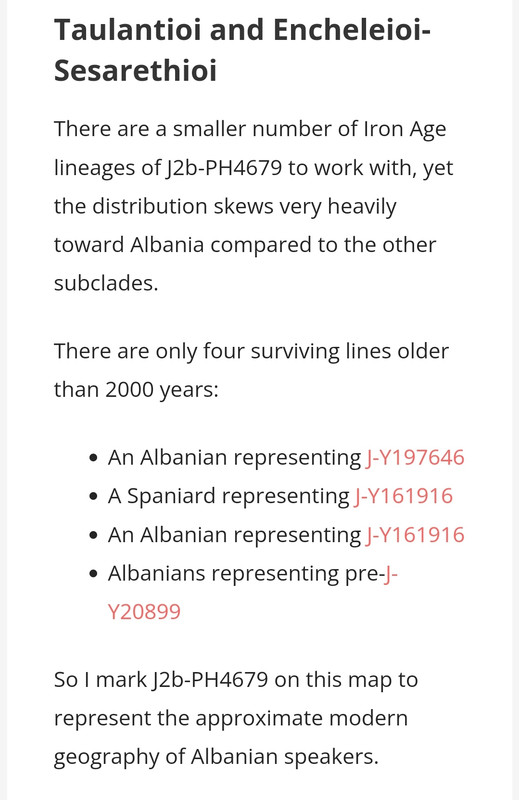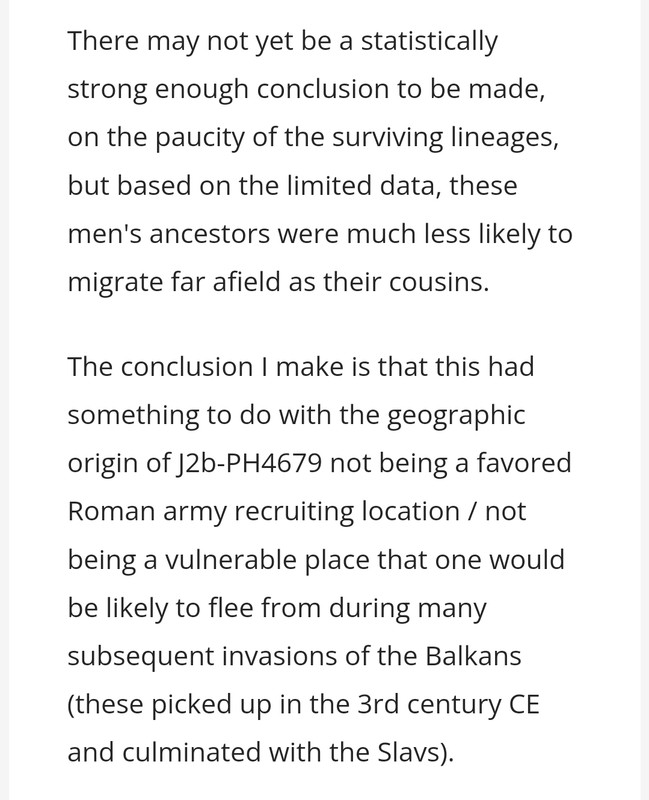n extremely interesting pattern is observed for haplogroup R-PF7562 represented entirely
in our data from its child lineage R-PF7563. R-PF7562 is a child lineage of the prominent West
Eurasian R-M269 lineage whose other child lineage R-L23 is the parent of the “mainland
European” L-51 and “steppe” R-Z2103 lineages. The two child lineages of R-M269 are
massively disproportionately represented in our data, with the popular R-L23 (from which the
dominant lineages of Yamnaya, Bell Beaker, and South Caucasus populations were derived)
occurring in 268 samples, while R-PF7562 only occurs in 5.
The earliest occurrence of R-PF7562 is in LYG001, a 2866-2580 calBCE sample from
Lysogorskaya 6, kurgan 3, grave 4 in the North Caucasus Piedmont of Russia.(17) Given that
within the phylogeny of R-M269 (R-PF7562, (R-L51, R-Z2013)) both R-PF7562 and R-Z2013
have their earliest examples in the North Caucasus and steppe to the north, the most likely
hypothesis is that the entire R-M269 clade originated there as well, with R-L51 representing a
lineage that eventually became highly successful in mainland Europe, R-PF7562 a lineage that
did not achieve the prominence of its relatives, and R-Z2013 became highly successful (briefly)
333
as part of the Yamnaya culture and its offshoots (e.g., in the South Caucasus) that we discussed
above.
But, what of the other 4 examples of R-PF7562? The second most ancient example is a
Mycenaean individual from the Palace of Nestor in Pylos (I13518; Kokkevis, Tomb V; 1450-
1200 BCE) and his 1st degree relative I13506 buried in the same tomb. This establishes a
connection between Mycenaean Greece and the North Caucasus on one hand, and more broadly
the R-L23 descendants of the steppe and mainland Europe. The remaining samples of R-PF7562
are much later: two Roman/Byzantine individuals from the Aegean region of Anatolia (I20000
and I20266) and a medieval sample from Albania (I13834).
In present-day Armenians and Georgians, haplogroup R-M269(xL23) – which will
encompass any R-PF7562 examples if present – was also found at low frequencies. (38) In a
very large collection of individuals from the Caucasus (n=1,370) only two examples were found
(in a Lezgin and a Tabasaran individual, both from the Northeast Caucasus).(462) The same
study found low frequencies of R-M269(xL23) in South/South East Bashkirs from the Circum-
Uralic region. But R-M269(xL23) was present in every group sampled from Southeastern
Europe (except the Roma and the mainland of Croatia). While the sampling scheme of present-
day collections of Y-chromosome data does not allow one to be certain about the prevalence in
different regions, the information we could obtain from a public database
(
https://www.yfull.com/tree/R-PF7562/) does suggest that R-PF7562 is present predominantly in
Southeastern Europe and the Caucasus, as well as adjacent areas of the Middle East and Eastern
Europe. Moreover, it also suggests (
https://www.yfull.com/tree/R-M269*/) that all existing R-
M269 belong to either R-L23 or R-PF7562 and thus the frequency of R-M269(xL23) can be used
as a stand-in for R-PF7562. However, in our ancient data we detect one individual from Armenia
(I14057; 776-545 calBCE, Brardzryal monument) that belonged to haplogroup R-M269*(xR-
PF7562,R-L23).
Much larger sample sizes (ancient and modern) typed for R-PF7562 are necessary to trace
the history of this low frequency lineage.
However, the available data are enough to propose that
it originated in the North Caucasus or its environs, that it had been present in southeastern
Europe by the Late Bronze Age at least, and that it continues to be an important (albeit low
frequency) lineage there.








